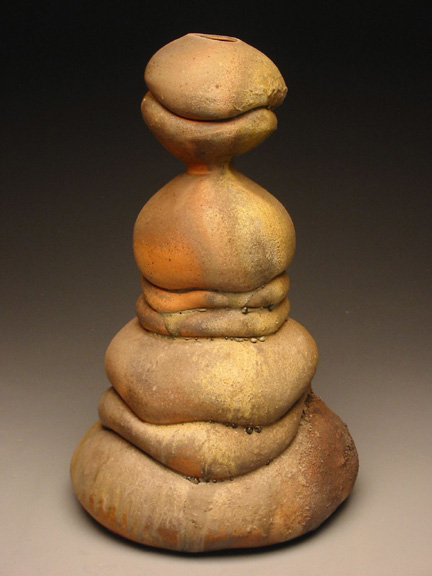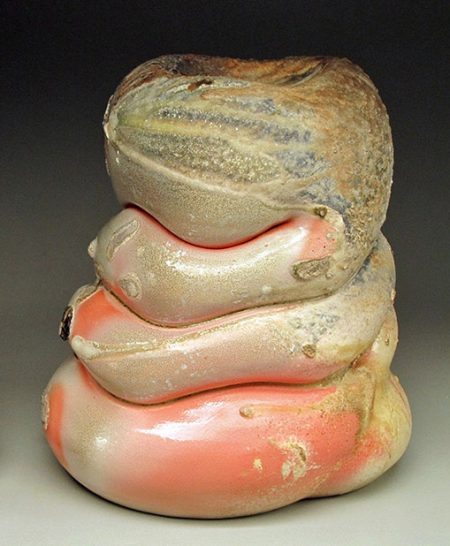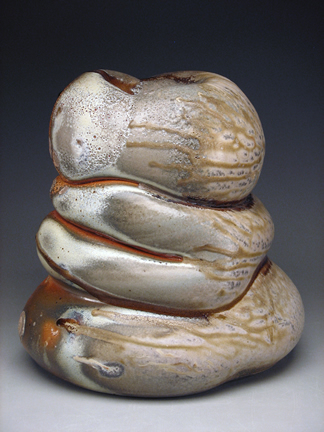Clay is interesting to me as both a material and a metaphor. When making, I look to engage the plasticity of the material and the sensuous, fluid volumes of the wheel-thrown vessel. The rich, varied surfaces of wood-firing convey the change and flux of the kiln environment. These processes tend to capture the sense of clay’s protean malleability that enhances way that the objects might be interpreted as a metaphor for the fugitive nature of experience. By using the vessel as an analogy for selfhood and subjecting it to processes of forming and firing that lend themselves to a sense of transformation (which is both actual and figural), I hope to elicit a sense that our relationship to ourselves and the world around us is more slippery than we ordinarily like to admit.
The work begins on the wheel as a rough cylinder, where gesture and rib marks are encouraged in order to enliven the form and initiate a give-and-take dialogue with the material. In response to the form’s idiosyncrasies, initial lines are lightly sketched on the surface using a finger or sponge. After the clay has stiffened slightly, these lines are revisited, revised, and reinforced by retracing their path, while pushing outward from the inside to stretch the clay wall and express the fleshiness and volume that clay is so capable of. This process continues as the bulges are coaxed and cajoled into a slow-motion collapse that acknowledges the inevitability of gravity’s pull, yet responds with teasing resistance.
The surface treatment is both a dialogue with history (albeit a somewhat smart-alecky one), and an exploration of materials and their chromatic and textural possibilities in the wood kiln. Much of my work is finished using various slips and/or glazes that are particularly sensitive to the atmosphere of the kiln. In order to expand my palette, however, I frequently introduce Mason stains, such as lobster pink, which creates a colorful tension between the juicy wetness of fluxed glaze and the mineral encrustation of ash and embers.



